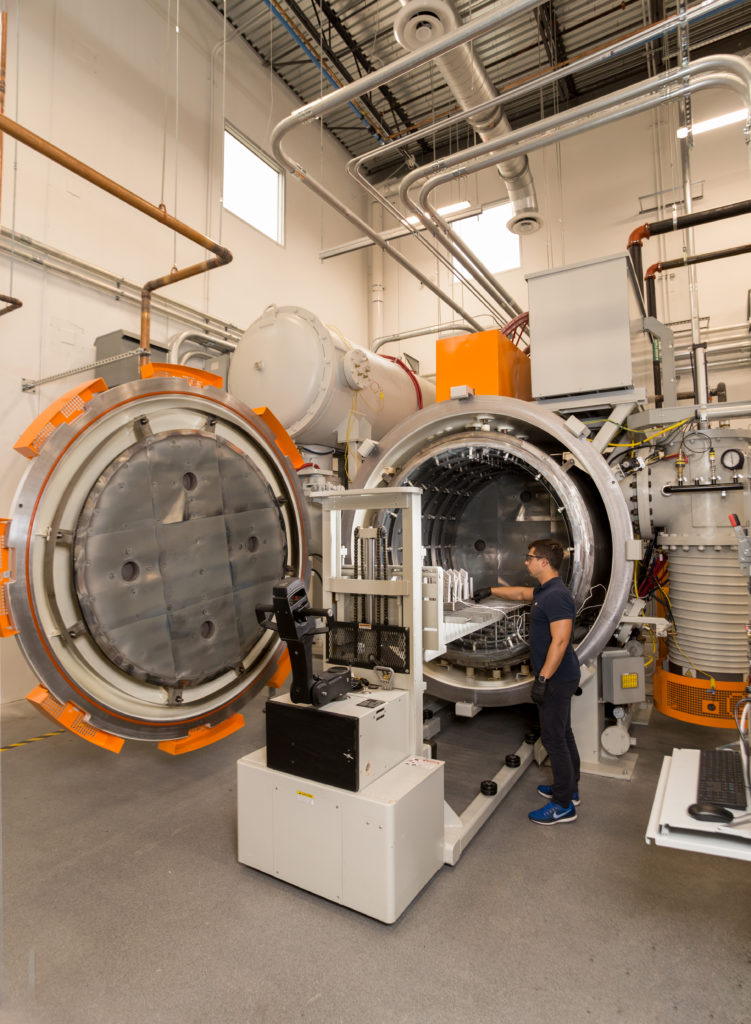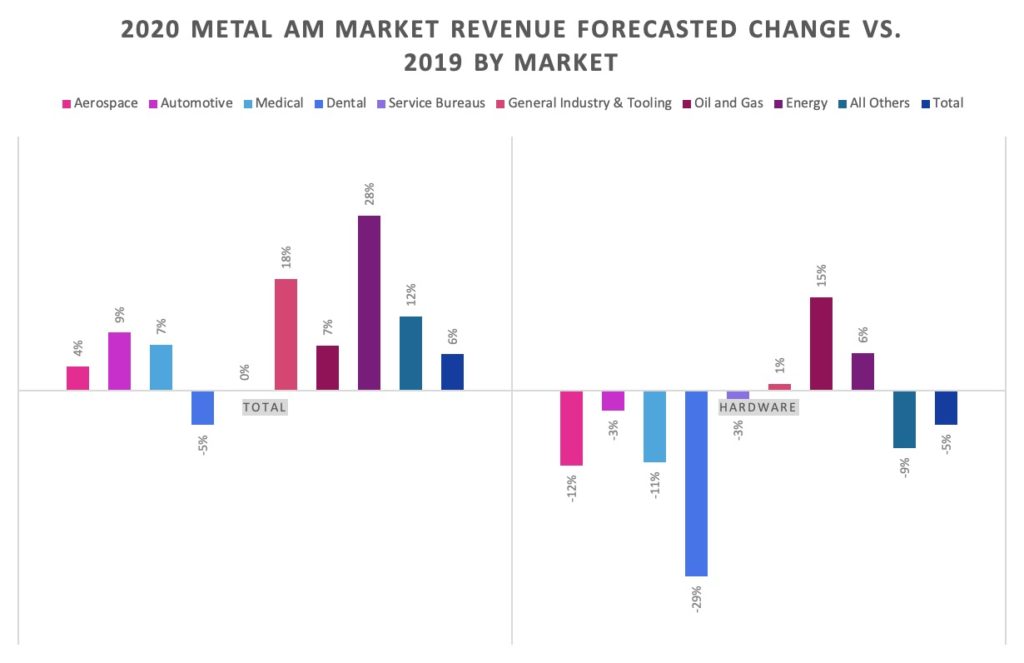SmarTech Analysis has published the sixth edition of its report dedicated to metal 3D printing powders, “Additive Manufacturing with Metal Powders 2020”, which takes into account the economic challenges and opportunities associated with metal additive manufacturing (AM) in the face of the COVID-19 pandemic. Using what the market research firm calls “a robust market tracking and forecasting dataset” that is provided with the report, SmarTech explores current dynamics in metal AM, both focusing on short-term trends and long-term projections.
The company predicts fewer purchases of metal 3D printing hardware, due to the economic downturn, may be partially offset by opportunities in material and production services resulting from new interest in 3D printing, leading to single-digit growth in these segments. In turn, SmarTech anticipates single-digit growth in metal AM revenue even after the economic issues faced by 3D printing companies. This growth is dependent on firms conducting new market strategies founded on this new interest in overcoming supply chain issues faced during the pandemic, according to SmarTech.
As we have seen, the pandemic has impacted every company in the industry, from 3D Systems and Stratasys to GE and Boeing, but that some firms have been able to weather the storm to some extent. SLM Solutions, for instance, has curiously posted a 90 percent increase in revenue growth over the first half of 2020 compared to last year through an order backlog from 2019 and a careful review of these orders.
SmarTech notes that nearly every firm in 3D printing used AM in a positive manner during the pandemic, either to produce critical components for medical care or to enable the development of new medical products for future events. As a result, 3D printing has come to the forefront of manufacturing once more. At the same time, the market research company points out that the fact that metal AM is heavily tied to powder bed fusion has “raised the collective bar for performance and capability of the technologies, exposing holes in the broader manufacturing landscape in terms of necessary expertise in additive.”
Despite the economic depression that has resulted from the impacts of the virus, new investments were made into metal AM in 2019 and early 2020. While growth has slowed, there have been new business ventures, with SmarTech pointing out that, so far during this time, the emphasis of these projects has been on production services rather than hardware.
An example of this is further investment by one of the world’s largest traders of goods and services, Sumimoto Corporation, in metal 3D printing service provider Sintavia. Despite the pandemic, Sumimoto is pouring more funds into the Florida-based AM company to scale its production for flight-critical parts.

Sintavia is the only company in the world with Nadcap approvals for laser additive manufacturing, electron beam additive manufacturing, and in-house heat treatment. (Image courtesy of Business Wire)
In addition to the new SmarTech report, the report’s author and Vice President of Research for Smartech, Scott Dunham, has recently written a 3DPrint.com PRO article providing some insight into the short-term dynamics of the metal 3D printing powders market. In that article, he notes that metal powders grew significantly in 2019 at a rate of 37 percent, compared to 2018. In the first three months of 2019 alone, as much powder was sold and shipped as in all of 2014 combined. This is driven in part, according to Dunham, by a small group of “AM power users”, such as Stryker, Siemens, and GE, who are using metal 3D printing for series production of important parts.
In other words, though the pandemic is generally slowing economic growth overall, the benefits of 3D printing when successfully implemented are continuing to make their way into general manufacturing. While growth may slow to single digits in the near-term, the long-term outlook for metal AM is bright.
The post SmarTech’s Metal 3D Printing Powders Report Sees Stalled Growth to $3.7B in 2020 appeared first on 3DPrint.com | The Voice of 3D Printing / Additive Manufacturing.


